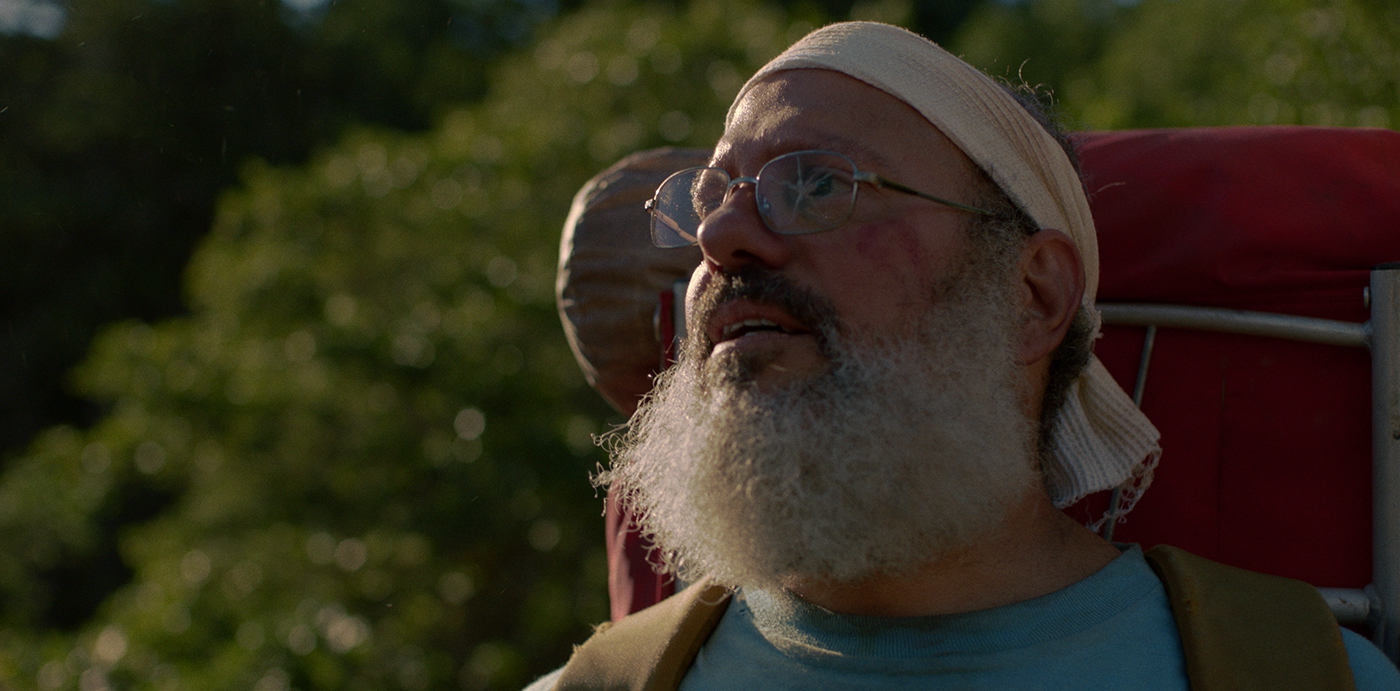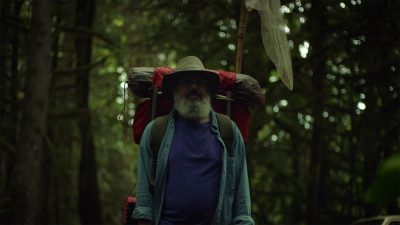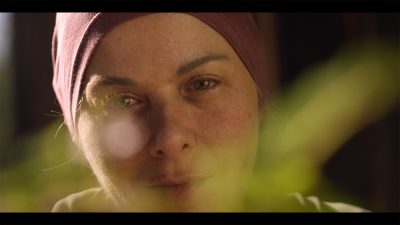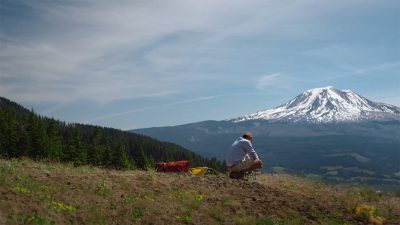
David Cross, Bigfoot and The Journey of “The Dark Divide”
Film Interviews
Anyone who paid attention in their high school English class likely has some familiarity with “The Hero’s Journey.” It’s the template for most storytelling, wherein a hero goes on an adventure, is victorious (or sometimes fails) and comes home changed by it. But for Robert Michael Pyle, a real-life hero’s journey took place in 1995 when this accomplished lepidopterist set out on a 30-day trek through the Gifford Pinchot National Forest—also known as “the dark divide,” famously known as Bigfoot country—a place where tourists flock every year hoping to catch a glimpse of the famous sasquatch. Pyle received a Guggenheim grant to document butterflies and moths, which he did while still trying to process the trauma of the death of his wife from the ravages of cancer, chronicling it all in his book, Where Bigfoot Walks: Crossing the Dark Divide.

For writer-director Tom Putnam and actor David Cross, their journey came in bringing the story of Pyle’s literal, personal and spiritual journey through the wilderness, through his grief and through the heart of his own existence, to the screen in the unforgettable film The Dark Divide.
“Ten years before we made the movie, a friend gave me the book to read,” Putnam says. The filmmaker—best known for his work in documentaries, including Burn and Marwencol—grew up in southern Washington near the forest, camping and hiking on the weekends. Pyle’s story resonated with him to such an extent that he decided to make it his first foray in narrative filmmaking. “I’m a doc person, but for some reason, when I read the story, it just reminded me of stories that I loved, like Never Cry Wolf … and I just wanted to approach it in a way that you couldn’t from a documentary.”
“I’m a doc person, but for some reason, when I read the story, it just reminded me of stories that I loved.”
Cross is a comedy legend known for his stand-up, the sketch comedy Mr. Show and for his iconic performance as Tobias Fünke on Arrested Development. He was drawn to the drama of Putnam’s script and to the rare opportunity to play a different kind of role. “I met with Tom in a bar in L.A.,” Cross says, “and we were originally going to meet for like an hour—it ended up being like three hours.” Cross and Putnam worked together establishing a vision of the film that worked for both artists, and Cross had nothing but praise for his collaborator. “If you’re going to make this kind of movie—specifically this kind of movie, which is low-budget, bare bones, asking a lot physically and emotionally—you’d better jibe with the writer-director. And we did.”
An important part of the process for Cross was meeting and spending time with Pyle. “There’s certainly an added bit of responsibility because this is a real person who still exists,” Cross says. “I met with Robert a couple of times, and he took me butterfly catching, and he’s just an amazing spirit and human being.” Cross is careful to point out that dramatic license was taken in his portrayal of the man. “The real Robert Pyle wasn’t nearly as naive about what to do in the woods in this kind of journey,” Cross says. “We play him as a little more inexperienced, well, I should say a lot more inexperienced than he was.”
“There’s certainly an added bit of responsibility because this is a real person who still exists.”

Pyle visited the set more than once, but was absent when they shot some of the more emotional sequences involving his wife, Thea, played by Debra Messing of Will & Grace fame. Thea Linnaea Pyle, a gifted artist whose work is featured in the film, fought a long battle with cancer that ultimately took her life, which is unflinchingly portrayed through the heartbreaking performances of Messing and Cross. “I don’t think I could have gotten to the place I got to if it wasn’t for Debra,” Cross says. “I’ve got to say that it was her and the work she did that helped me get to where I needed to go to, and probably not vice versa.”
One of the more challenging, and certainly one of the most memorable, sequences in the film is when a rare, endangered spotted owl lands on Pyle’s head. Pyle has never seen such an owl, but is a staunch advocate for the preservation of the species in the region, arguing with loggers and others who believe that industrialization trumps the need to protect them. A sighting of such an owl is rare, making this encounter a surreal and almost spiritual experience for Pyle, as the owl represents the fragility of existence. For Pyle, it evokes the feeling that his wife is present with him on the journey. This beautiful sequence was done practically with no special effects but, instead, with a real-life owl.
“I don’t think I could have gotten to the place I got to if it wasn’t for Debra.”
“First of all, that owl is deceptively heavy,” Cross says. “And its talons are—I mean, it’s insane, the length, the sharpness of them. ” In order to keep Cross safe, a layer of dense foam core was placed under his hat. “Then it was just a matter of throwing dead mice from about 10 feet off camera, maybe 12 feet, and most of them hit me in the chest, occasionally my face—dead, frozen mice.”
The mystique of the Bigfoot legend hangs over the film, as Pyle encounters tourists looking to catch a glimpse as well as locals who firmly believe in the existence of the creature. He gradually finds himself wondering about the possibility of the creature’s existence as he encounters so many natural wonders and steps further outside his small bubble than ever before. But do the filmmakers believe?
“Then it was just a matter of throwing dead mice from about 10 feet off camera, maybe 12 feet, and most of them hit me in the chest, occasionally my face—dead, frozen mice.”

“I would be surprised if Bigfoot exists,” Putnam says. “ But I gotta say, you get in these primeval forests, and you expect to see a dinosaur pop around the corner … One of the things about the dark divide is that it’s sort of this curtain between the past and the present, and how the world and how the world used to be, and if Bigfoot lived anywhere, that’s probably where it would be.”
The Dark Divide is an unforgettable journey for the viewer, as well as for those who took part in the film and the true story. It’s currently available on video on demand, and will stream for free on IMDbTV or with a subscription to Amazon Prime beginning May 21.